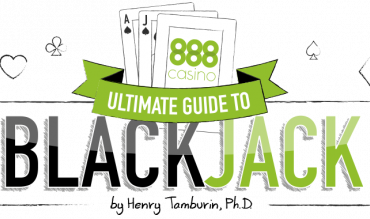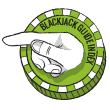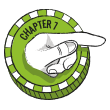SCOUTING BLACKJACK TABLES

After you already know how to play blackjack, It’s important to “scout” the blackjack tables in a casino before you sit down and play. That’s because most casinos nowadays often have a different mix of rules, number of decks, and shuffling procedures from one blackjack table to the next.
Because of this, you need to:
- Scout the blackjack tables to determine which game is the best one to play.
- Know how to estimate the house edge against you based on the mix of rules.
![]()
SEARCHING FOR THE BEST BLACKJACK TABLE: WHAT TO LOOK FOR
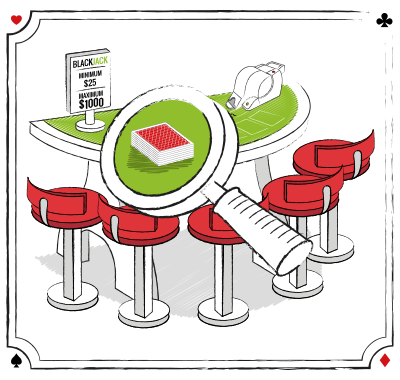
WHEN YOU ENTER A CASINO YOU SHOULD SCOUT THE BLACKJACK TABLES TO DETERMINE:
- What the minimum and maximum betting limits are.
- How many decks are being dealt.
- What the playing rules are.
- How the cards are shuffled.
- Number of Players
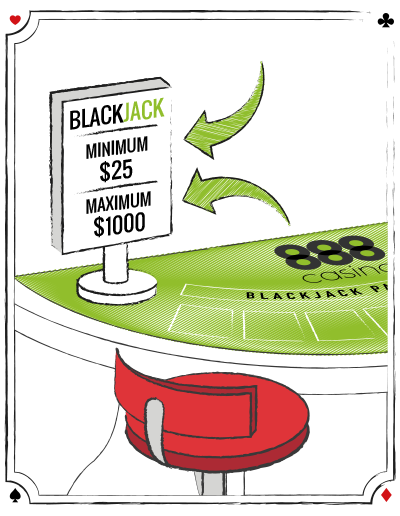
MINIMUM-MAXIMUM BETTING LIMITS
The betting limits aren’t going to change your playing strategies. However, the reason you should check what the betting limits are before you buy in and make your first bet is to avoid the embarrassing situation of not betting at least the table minimum. Think this doesn’t happen? I’ve seen this scenario numerous times during my playing career. A player sits down, places a wad of bills on the layout, and asks the dealer for chips. Play is stopped while the dealer spreads the cash on the layout, counts it, counts out the equivalent amount of chips, and then slides the stack of chips to the player.
Sometimes the dealer has to wait to get the approval from the floor supervisor before she can give the chips to the new player, who then proceeds to slide two red chips ($10) in his betting spot while fellow players raise their eyebrows in disgust. The dealer then announces to the new player, “Sir, the minimum bet on this table is $25,” while pointing to the placard sitting just to the dealer’s right that summarizes the betting limits and rules. Usually, the player will sheepishly remove his two red chips, pick up the rest of his stack of chips, and without saying a word, leave the table embarrassed at what just transpired. Therefore, rule number #1 is to known the betting limits on the blackjack table before you sit down and play.
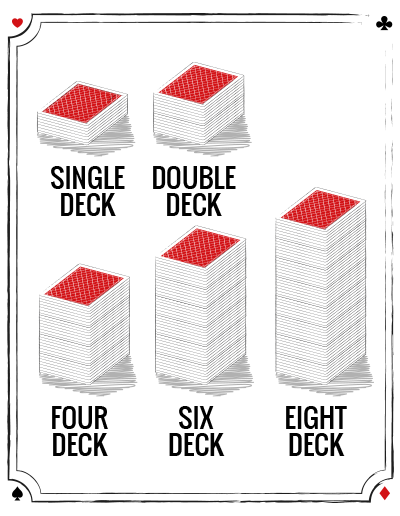
HOW MANY DECKS?
The number of decks of cards has an effect on the house edge against a basic strategy player. Generally, the house edge increases as the number of decks increases. But you also need to factor in the mix of rules.
The point here is to know whether the game you are about to play is single- or double-deck, or in the case of a multi-deck game whether it’s four, six, or eight decks. Sometimes, the placard will state if it’s a single- or double-deck game but rarely will it state if it’s a four-, six-, or eight-deck game.
Usually, the cards in a multi-deck game are dealt from a dealing shoe. With a little experience, you’ll be able to tell when the dealer shuffles the cards or by looking at the sideways stack of cards in the dealing shoe immediately after a shuffle if the game is using four, six, or eight decks; however, if you are not sure, just ask the dealer.
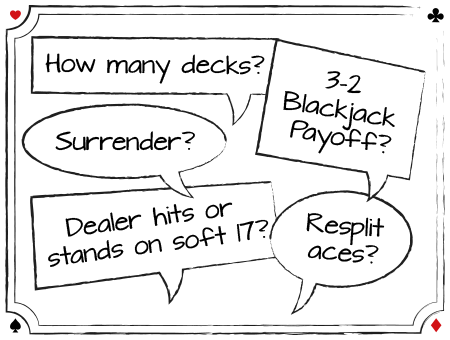
MIX OF PLAYING RULES
This is where the rubber meets the road. It’s the mix of playing rules, along with the number of decks of cards, that will determine the house edge against you.
It’s important that you know whether the rules on a particular blackjack table require that the dealer stand on soft 17 or must hit soft 17; whether you can double down on any two initially dealt cards or if there are restrictions on what hands you can double; whether surrender is allowed; whether re-splitting of aces is allowed; and, most importantly, what the payoff is for an untied blackjack (is it 3-2, 6-5, 7-5, or even money). I’ll cover the importance of playing rules in more detail in the next section.
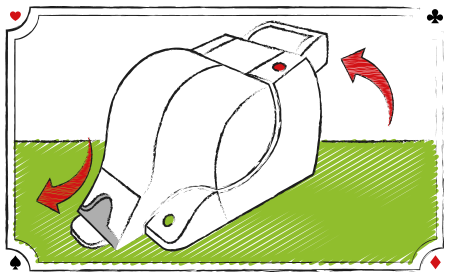
HOW THE CARDS ARE SHUFFLED
If the game is dealt with a single- or double-deck of cards, the dealer will usually hand shuffle the cards and there is no issue here. With a multi-deck game, dealers will either shuffle the multiple-decks manually, although this is time consuming, or via an auto shuffler. There are several different kinds of auto shufflers and the one you want to avoid is the Continuous Shuffling Machine (or CSM). The reason for this is important so stay with me while I explain how each shuffler works.
Automatic blackjack shufflers have been around a long time in casinos. Usually a casino will use two sets of multiple decks of cards on a blackjack table. While one set of cards is being used by the dealer on the game, the other set is being shuffled offline by the automatic shuffler. When the cut card appears, the round is completed and then the dealer will swap the cards; meaning, the just-used multi-decks will be placed in the automatic shuffler (to be shuffled) while the shuffled decks that were in the machine (offline) are put into play by the dealer for the next rounds. The purpose of using two automatic shufflers is to eliminate the wasted time involved in having the dealer manually shuffle the cards. (From the casino’s perspective, time is money, and when their dealers are manually shuffling multi-decks of cards, the number of hands dealt per hour decreases compared to when the cards are shuffled by an automatic shuffler.)
The odds against the player in blackjack do not change when an automatic shuffler is used to shuffle the multi-decks. If the casino were using, say, six decks of cards, they will usually deal about 65 to 80% of the cards and then reshuffle all six decks using the auto shuffler.
A CSM, on the other hand, is a combination automatic shuffler and dealing shoe. Casinos usually place five decks of cards into the CSM. After a betting round is completed, the dealer will scoop up the just played cards (i.e., the discards), and instead of placing them into a discard tray, she will insert them back into the CSM where they are randomly shuffled with the remaining (roughly 4.5) decks of cards.
Do you see the difference between a CSM and an automatic shuffler? With the latter most of the cards are played (ca. 65 to 80%) before the discards and unplayed cards are shuffled together. With a CSM, the discards are immediately returned to the shuffler after each round (sometimes several rounds) and randomly mixed with the unplayed cards. With a CSM, the action never stops because the dealer continuously deals the cards without pausing for shuffling.
Do the odds change against a player when a CSM is used? The answer is yes, they change very slightly in favor of the player, with the house edge against a basic strategy player reduced by about 0.1% in a typical six-deck game. The reason the CSM causes the house edge to go down ever so slightly is because of a phenomenon known as the “cut card effect,” which slightly increases the probability of getting tens and blackjack when a CSM is used.
Now before you rush out and play blackjack on a table that uses a CSM, pay attention to the rest of the story. Even though the house edge decreases slightly with a CSM, this is more than negated by the increased speed of the game. Remember with a CSM-dealt game, there is never any down time for shuffling; therefore, on average, casinos can deal about an extra round or two per hour resulting in about 15 to 20% more hands played per hour with a CSM. From the player’s perspective, the extra hands played (and bet) each hour will increase your hourly theoretical loss compared to a manually shuffled game. (Ditto for games dealt with auto shufflers.) Bottom line: If you are a basic strategy player, it’s best to play in manually-shuffled games as opposed to games dealt with CSMs and auto shufflers
“Note: The original purpose of CSMs was to eliminate card counting as an effective strategy to gain the edge over the casino. I’ll have more to say about this in Chapter 10.”
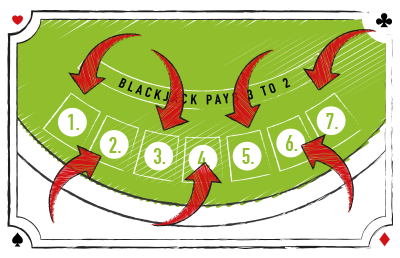
NUMBER OF PLAYERS
If you are not using some of the techniques I summarized in Chapter 5 (reduce house edge), the casino will have a small edge over you (that assumes you are using the basic strategy summarized in Chapter 3 accurately). Given this fact, you are better off playing at a full table rather than a table with fewer players, or worse, heads up against the dealer. The reason is you’ll get fewer hands dealt to you at a full table, which will reduce the exposure of your bankroll to the house edge.
GOOD AND BAD BLACKJACK RULES
One of the key factors that determine the house edge in blackjack is the playing rules. Some playing rules will decrease the house edge whereas others increase it. It’s important you know the good rules from the bad ones.
As a general guideline, rules that offer the player options (e.g., surrender and doubling down after pair splitting) are favorable to the player (assuming the player uses the options accurately); whereas, rules that limit a player’s options (e.g., NDAS and no resplits) are unfavorable to the player. Likewise rules related to the dealer’s options (S17 vs. h27) and blackjack payoffs (3-2 vs. 6-5) can be player favorable or unfavorable.
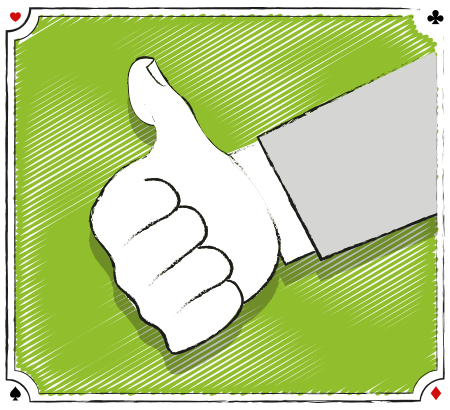
Here is a list of most of the good rules in blackjack.
- Blackjack pays 2-1
- Blackjack pays 3-2
- Single and double deck
- Early surrender
- Doubling down on any first two cards
- Doubling down on soft hands
- Doubling down after pair splitting
- Resplit pairs
- Resplit aces
- Late surrender
- Dealer stands on soft 17
- Player is allowed to enter a game in mid-shoe
- Manual or auto shuffle

Here’s a list of the bad rules.
- Blackjack pays 6-5
- No doubling down after pair splitting
- Doubling down only on 10 and 11
- No doubling on soft hands
- No resplitting aces
- Dealer hits soft 17
- No surrender
- Six and eight deck
- No mid-shoe entry
- Use of CSM to shuffle the cards
Your goal is to be sure that the blackjack game you are about to play offers mostly the good (player favorable) rules.
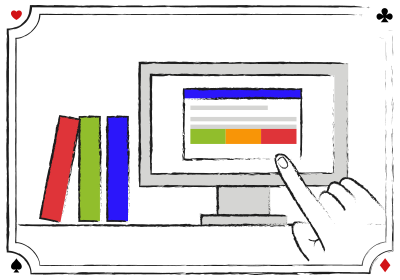
ESTIMATING THE HOUSE EDGE FOR ANY GAME
You’ll find data in blackjack books and on the Internet on how the above rules affect the house edge. There are also websites where you can key in the rules of any game and they will automatically compute the house edge. Here are some examples.
NUMBER OF DECKS
All other conditions being equal, the more decks being used, the higher the house edge against the basic strategy player. For example, the following blackjack table shows the effect that the number of decks has on the house edge against a basic strategy player with h27 and DAS. (These are Total-Dependent house edges.)

Notice that as the number of decks increases, the house edge increases incrementally up to 0.64% for an eight-deck game. Notice also how the incremental increase in house edge keeps getting smaller as the number of decks increases. That’s why casinos don’t use more than eight-decks of cards on their tables.
PLAYING RULES
Each of the good (player favorable) and bad (player unfavorable) rule affects the basic strategy, some greater than others. The effect for any one rule, say surrender, may also be slightly different for a double-deck game vs. a six-deck game. Some rules are also more common than others. If you consult the tables in Chapter 3, I’ve summarized what the house edge is for different number of decks and mix of playing rules. Use this as a guide to determine which mix of rules is the most player favorable.
TIPS
- Blackjack games that pay 2-1 for a blackjack are very rare.
Reason: A 2-1 payoff decreases the house edge by a whopping 2.3% (approximate), which often results in a game with an overall positive expectation for the basic strategy player. Casinos sometimes offer 2-1 BJ promotions for a limited period of time. If you hear of one, run (don’t walk) to the casino to take advantage of this promotion before all the seats are taken. - The house edge increases roughly 0.2% when the rules specify h27 vs. S17.
- Paying 6-5 for a blackjack increases the house edge by roughly 1.39%, which is why you should never play any 6-5 blackjack games.
- Some casinos are also paying 6-5, 7-6, or worse, even money, for a blackjack in double-, six-, and even eight-deck games. If the rules don’t specify a 3-2 payoff for a blackjack, don’t play.
- Early surrender is a much more player favorable rule than late surrender (about 0.6% decrease in house edge vs. 0.07% decrease respectively) but it is rarely offered.
- Not being allowed to resplit any non-ace pair costs the basic strategy player about 0.05%.
- Being allowed to resplit aces decreases the house edge by roughly 0.06% (or 0.07% if you can resplit twice, up to four hands)..
My suggestion if you want to calculate what the house edge is for any game is to use the data on the effects of the house edge that you’ll find in most blackjack books or one of the house edge calculators on the Internet.
You can also refer to the tables in Chapter 3 that summarize what the house edge is for different number of decks and mix of rules to get an idea of what rules you should be looking for when you play blackjack.
KEY TAKEAWAYS:
- Scout the blackjack tables before you sit down and play.
- Be sure you know what the betting limits are.
- The fewer number of decks the better, assuming the rules are equivalent.
- Play in manually-shuffled games rather than games dealt with a CSM or auto shuffler.
- Pick the game with the best mix of rules.
- Play at a full table rather than heads up or with just a few players.
- As the number of decks increases, assuming all else is equal, the house edge increases.
- Each playing rule has either a positive or negative effect on the house edge.
- You should play blackjack games that have the best mix of player-favorable rules.
![]()
TEST YOURSELF
Try to answer the following questions based on the information in Chapter 6.
- Name three variables that you check when you scout a blackjack table.
- Why is the number of decks of cards important?
- What other variable (besides the number of decks of cards) affects the house edge?
- Why is the way the casinos shuffle the cards important for a basic strategy player?
- Which type of shuffling machine should you avoid?
- It’s best to play at a less crowded rather than a full table if you are a basic strategy player. True or False?
- How do you know what the betting limits are on a blackjack table?
- Which rules are player favorable: h27, S17, DAS, NDAS, LS?
- What is the worst rule for a player?
- Which game has the lowest house edge?
- Single-deck, 6-5, h27, DAS
- Double-Deck, h27, NDAS
- Six-Deck, S17, DAS, LS
- Eight-Deck, h27, DAS, LS
Answers
- Any of these four: number of decks, playing rules, how the cards are shuffled, or betting limits.
- The greater the number of decks the greater the house edge assuming all else is equal.
- Mix of playing rules.
- The faster the game (i.e., more hands dealt per hour), the more your bankroll will be exposed to the house edge and the higher will be your theoretical loss per hour). Manually shuffled games are slower (and therefore better) than an auto shuffler or CSM (assuming same number of players).
- CSM.
- False.
- Check the rules, which should be posted somewhere on the blackjack table.
- S17, DAS, and LS.
- Blackjack paid at 6-5 (or worse, even money).
- c.
Written by Henry Tamburin Ph.D.
![]()
